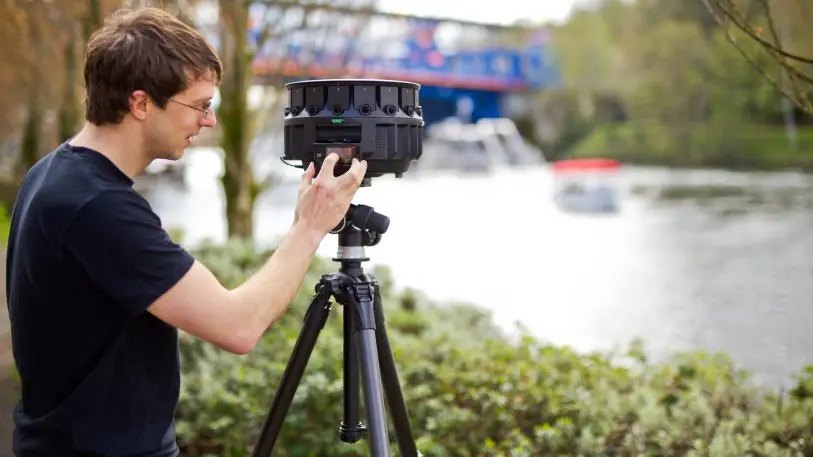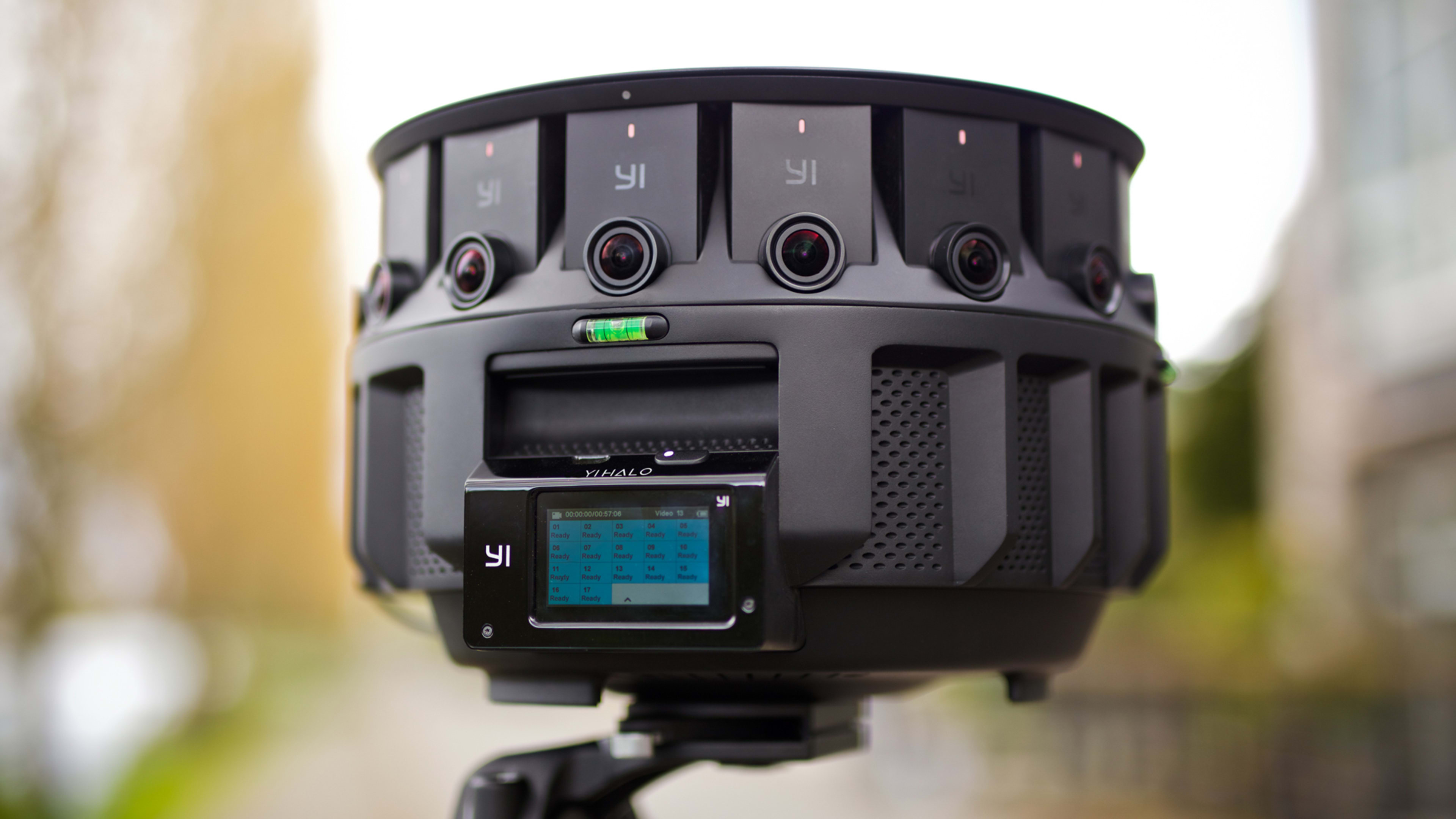Almost every day, it seems, a new camera for shooting virtual reality content is announced. Ranging from consumer-grade devices that cost a few hundred dollars to those meant for Hollywood filmmakers that come with five-figure price tags, the goal is the same: to ensure that there’s more and more VR content so that people buy more VR headsets.
Last week it was Facebook, which unveiled its professional-quality x24 and x6 cameras. Today, it’s Google’s turn, with the unveiling of the company’s second high-end VR camera, the Jump Halo.
Developed by Google and made by China’s Yi, the $17,000, 17-lens Jump Halo—and its associated post-processing software and distribution system—is meant to shoot high-quality 360-degree video, stitch it together automatically, and be light enough at 7.5 pounds to take just about anywhere.

Google launched its first Jump camera last year. This Jump is all new and includes what the company said was the most-requested feature for a second-generation: an upward-facing lens that ensures the video it shoots captures not just 360 degrees, but also everything above the camera, and then stitches it all together seamlessly.
The Jump Halo can shoot 8K by 8K stereoscopic 360 video at 30 frames per second, or 6K by 6K at 60 frames per second. It also gives filmmakers total control over parameters such as ISO, white balance, and the like. It’s optimized for Google’s VR platform, says Yi CEO Sean Da, and ensuring content works with Google’s stitching algorithms, which aim to remove most if not all of the telltale lines that often betray where content from one lens didn’t quite mesh with that of the next one over.
The camera can be powered by a mobile app that gives a “consumer-type experience,” Da says, giving filmmakers control over things like a live view from the camera, as well as the ability to change settings remotely. And once shooting is over, it’s meant to be easy to load the footage into an assembler program. Content then is processed and ready in a matter of hours.
According to Emily Price, Jump’s product manager, the Jump assembler software is able to return fully stitched video in about eight hours, down from the 24 hours it took just a year ago. But, she says, the tool can show a “rough stitch” preview on a laptop while still shooting.
With high-end VR cameras from Facebook, Jaunt, Nokia, and now Google available, one might imagine filmmakers would have a hard time choosing. But according to Armando Kirwin, a VR filmmaker with Milk VR who had early access to the Jump Halo and was one of the first to use Facebook’s $30,000 first-generation Surround 360 camera, there really isn’t that much confusion.
“It’s a different tier,” Kirwin, who spoke at a Google press event unveiling the camera, said of the Jump Halo in comparison to the new Facebook devices.

By that, he means that Google’s new camera is meant to be portable, affordable, and within the reach of many filmmakers. Facebook’s camera, on the other hand, is aimed at professionals on multimillion-dollar shoots.
“You can [use the Jump Halo] by yourself,” Kirwin said. “Facebook’s camera requires teams of professionals, which are more expensive.
His point was really to stress that although it might be tempting to position the VR cameras from Google and Facebook as competitors, they’re really aiming at totally different markets and shouldn’t be thought of as such.

Still, Kirwin appreciates that VR filmmakers now have many choices for shooting their projects.
“When we started making cinematic VR, there were zero cameras” on the market, he said, “so we had to build our own.
Now, there’s a proliferation of cameras, and that means that soon, VR production will be “democratized.”
Added Kirwin, “That’s fine. That’s the way Hollywood works now. It’s inevitable VR would work that way.”
And that’s nothing but a good thing as the need for VR content to motivate people to buy VR headsets becomes more acute.
“Within a year, cameras that [once] cost us $1 million will cost $10,000,” he said. “The number of people creating content is exploding. That makes a huge difference in the industry.”
Recognize your brand’s excellence by applying to this year’s Brands That Matter Awards before the early-rate deadline, May 3.
